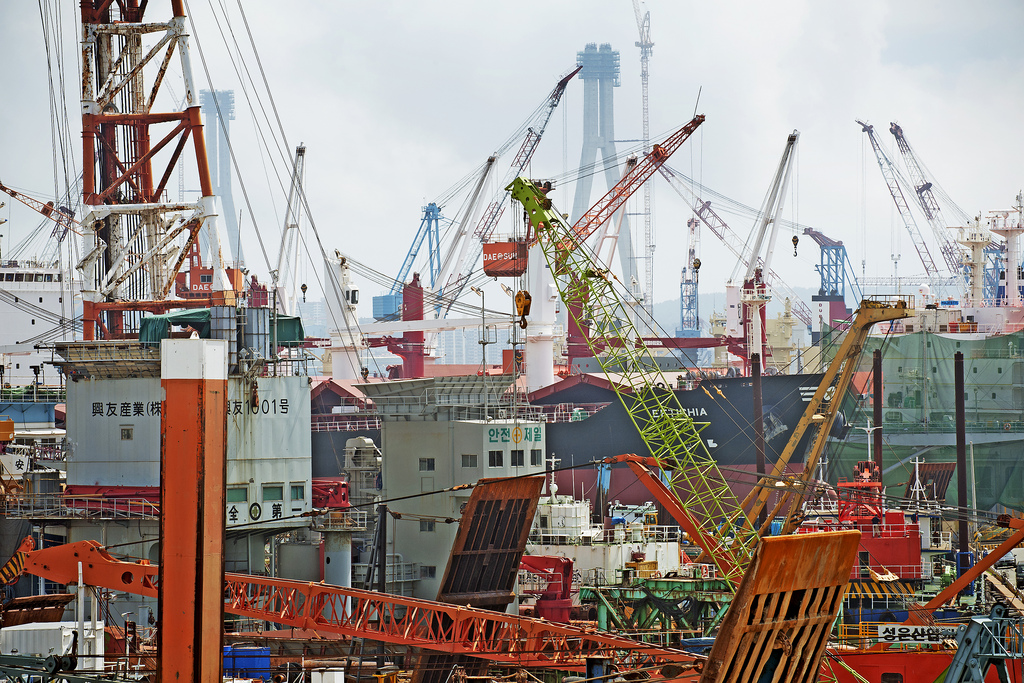The Peninsula
Korea Moves Towards Joining the Trans-Pacific Partnership

By Troy Stangarone
On November 29, Korea took the first step towards joining the Trans-Pacific Partnership (TPP) by announcing an expression of interest in taking part in the agreement. Over the next few weeks it will consult with current 12 members of the TPP, including the United States, Japan, Canada, and Australia about its prospects for joining the agreement before making a final decision. While Korea’s announcement is only the first step in the process, Korea’s eventual membership in the TPP would be a natural outgrowth of the current administration’s broader economic and trade policy.
Under the Park Geun-hye administration the government has sought to transform the Korean economy into one driven by innovation and creativity, while making Korea the “linchpin” for regional economic integration and connecting the TPP with the Regional Comprehensive Economic Partnership (RCEP), the other major regional trade agreement currently under negotiation. While both the TPP and RCEP would seek to lower barriers to goods and services, TPP will take more significant steps towards addressing the types of behind the boarder measures, such as rules and regulations, that have become the most significant barriers to trade.
As currently constructed, the TPP involves 12 nations that represent 38 percent of the world’s GDP, 27.8 percent of world trade, and 11.2 percent of the world’s population. The members of RCEP, which include ASEAN plus Korea, China, Japan, New Zealand, and Australia account for 28.5 percent of global GDP, 27.7 percent of world trade, and 48.6 percent of the world’s population.
In terms of income gains, RCEP potentially offers Korea more significant benefits than TPP. According to work done by Peter Petri and Michael Plummer, an Asian track for regional integration, similar to RCEP, would yield income benefits of $87.2 billion for Korea, while TPP would be worth $45.8 billion. However, their work also indicates that the most significant benefit of a regional trade agreement for Korea comes from the development of a Free Trade Area of the Asia-Pacific. This would lead to income gains of $129.3 billion for Korea, which represents a key reason for Korea to take part in both agreements.
However, beyond the baseline income benefits is the type of trading environment Korea would like to see develop in the region. What types of rules and regulations does Korea envision a more integrated Asian or Asia-Pacific economy functioning under? Is it one that seeks to open markets to Korean goods and services by removing more of the behind the borders barriers that have grown in importance or one that maintains more restrictions? This issue will increasingly grow in importance as Korea seeks to shift towards the development of a creative economy where intellectual property protection and increased services access will be key components of future economic growth.
Additionally, while both the TPP and RCEP share similarities, including many of the same partners, for Korea to maintain influence in regional economic discussions it needs to be a member of both groupings if it hopes to serve as a linchpin between the two. As a key trading nation in the region, one of Korea’s most important tools for achieving the type of trading environment it would like to see develop is to clearly signal its policy preferences to its trading partners. By taking part in both RCEP and TPP Korea can signal that it supports both efforts and is not adverse to a more robust regional agreement than currently envisioned under RCEP.
Korea has taken this path before with great success. Its trade policy over the last decade has played a significant role in shaping regional trade policy. Korea’s current FTA talks with China are a direct outgrowth of Korea’s prior FTAs with the United States and the European Union. Korea’s acceptance of higher standards in those agreements and its insistence on higher standards in the agreement with China have helped to raise China’s own negotiating ambition in its talks with Korea. The TPP itself is largely modeled on the KORUS FTA.
Lastly, while some might suggest that Korea should refrain from joining the TPP because of concerns expressed by China, those concerns may well be less of a factor. China has recently been more positive about TPP and has even suggested it may seek membership in the future as many of the disciplines in the TPP would be beneficial for its own economy. As long as Korea continues to maintain the Korea-China FTA as its main priority, it seems unlikely Beijing would object to Korea’s participation in TPP.
Pursuing membership in the TPP should not preclude Korea from also taking part in RCEP or engaging in its current talks with China, but would enhance key aspects of the current administration’s economic and trade policy, including efforts to make Korea the linchpin of regional economic integration. While Korea may ultimately decide not to join TPP, its recent announcement is a positive signal that it does hope to do so in the near future.
Troy Stangarone is the Senior Director for Congressional Affairs and Trade at the Korea Economic Institute of America. The views expressed here are his own.
Photo from United Nations Photo photostream on flickr Creative Commons.
